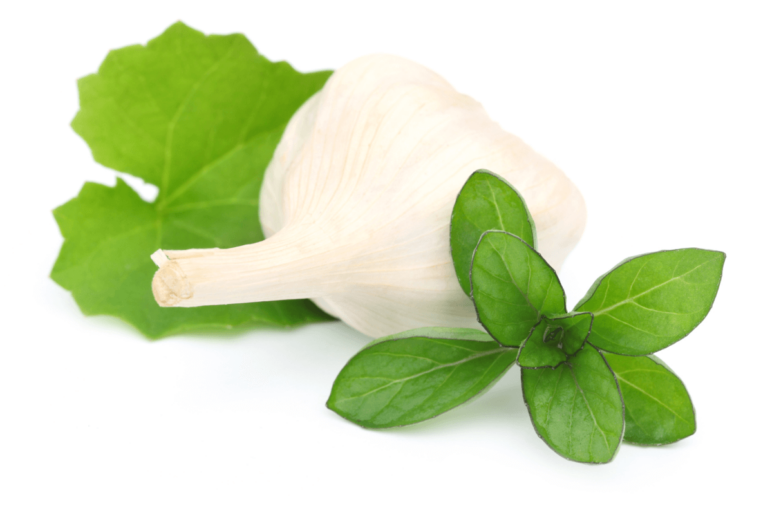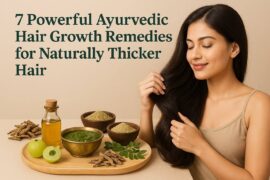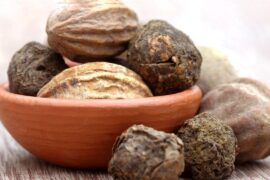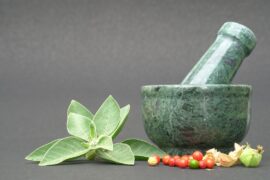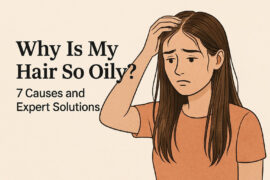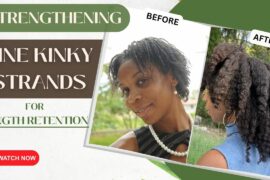Brahmi, scientifically known as Bacopa monnieri, holds a revered position in the pantheon of Ayurvedic herbs. Traditionally recognized for its cognitive-enhancing effects, this small, creeping herb is rich in potent compounds that offer a spectrum of health benefits beyond brain function. In recent years, modern scientific research has begun to validate many of Brahmi’s traditional uses, including its remarkable benefits for hair health.
Through its rich therapeutic properties, Brahmi promotes hair growth and acts as a shield, preventing split ends, reducing hair loss, and ensuring that your tresses remain a crowning glory. With increasing interest in natural hair care solutions in the United States, Brahmi has emerged as a powerful option for those seeking alternatives to conventional hair products.
This comprehensive guide explores the scientifically-backed benefits of Brahmi for hair health, how to incorporate it into your hair care routine in the United States, and practical ways to harness its full potential for healthier, more vibrant hair.
What is Brahmi? Understanding This Powerful Ayurvedic Herb
Brahmi (Bacopa monnieri) is a small, creeping perennial herb with succulent leaves that grows in wetlands throughout South Asia. For thousands of years, it has been a cornerstone of Ayurvedic medicine, India’s traditional medical system. The name “Brahmi” is derived from “Brahma,” the creator god in Hindu mythology, reflecting the herb’s revered status in Indian culture.
Takeaways
- Holistic Hair Health: Brahmi, or Bacopa monnieri, is an Ayurvedic herb traditionally used for cognitive enhancement. It is now also recognized for promoting hair growth, reducing hair loss, and preventing split ends.
- Ayurvedic Perspective: It balances the Pitta dosha, leading to improved blood circulation in hair follicles and better stress management, which is crucial for hair health.
- Versatile Forms: Brahmi is available in various forms, like Brahmi Ghrita (medicated ghee), oil, powder, and juice. Each form is designed to leverage its therapeutic properties for hair care.
- Nutrient-Rich Benefits: Rich in vitamins, minerals, and flavonoids, Brahmi strengthens hair roots, significantly reducing hair fall and nourishing hair follicles to boost hair growth.
- Scalp Health: It regulates sebum levels, preventing dandruff and maintaining a healthy scalp, while its antioxidants provide a soothing effect, reducing scalp irritation.
- Prevention of Damage: Brahmi oil moisturizes, and Brahmi powder creates a protective layer around hair strands, jointly working to prevent split ends.
- Usage Precautions: For sensitive scalps, Brahmi powder should be mixed with soothing agents like milk or honey, and Brahmi oil should be diluted with carrier oils like coconut or almond oil.
- Side Effects and Dosage: While generally safe, Brahmi should be used in moderation. Overuse (over 3-5 grams per day) can lead to gastrointestinal issues, nausea, and in rare cases, allergic reactions.
- Incorporation into Routine: Beyond occasional use, integrating Brahmi into regular hair care through shampoos, conditioners, serums, and regular scalp massages can enhance its benefits.
- Complementary Hair Care Practices: A balanced diet, protection against environmental factors, minimizing heat styling, and regular hair trims complement the benefits of Brahmi for overall hair health.
- Brahmi vs. Other Herbs: Brahmi is distinct from herbs like Bhringraj (Eclipta alba), with each having unique properties and benefits in hair care.
- Application Tips: Brahmi oil can be left overnight in hair, but masks or pastes should be washed off after 20-30 minutes to avoid scalp irritation. Brahmi can be taken on an empty stomach for enhanced absorption.
Forms of Brahmi Available in the Market
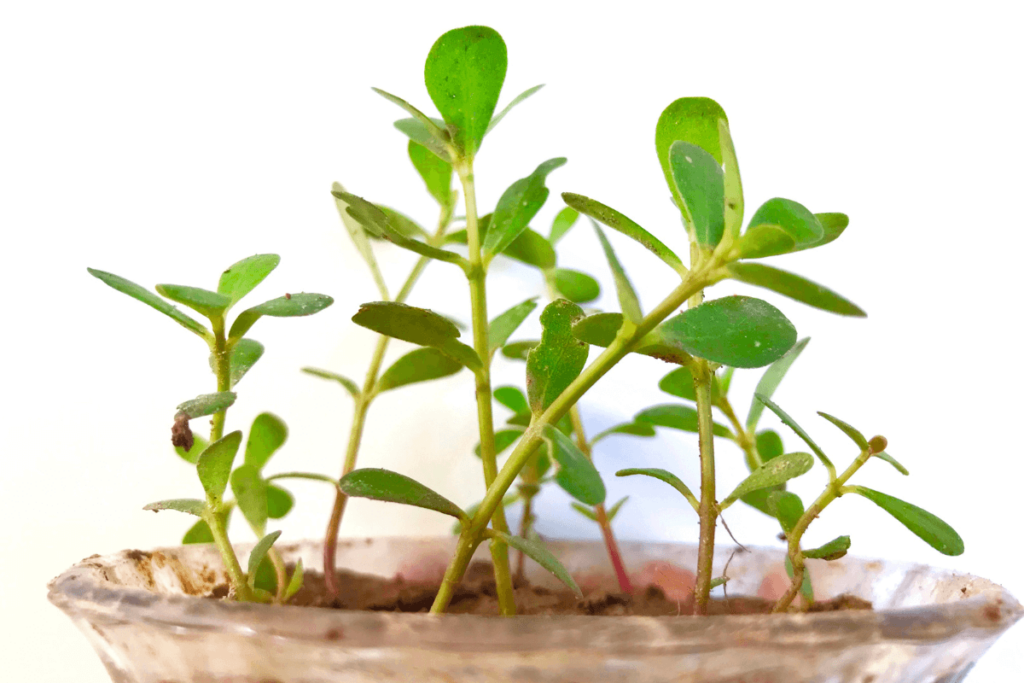
Brahmi, a versatile herb, graces the market in myriad forms, offering unique hair care benefits. From Brahmi Ghrita (medicated ghee) to Brahmi oil, the herb is presented in various avatars, including powder and juice, each meticulously crafted to harness its potent properties. The Ayurvedic method of preparing Brahmi oil and ghee, known as Taila Paka Vidhi, involves a delicate process of blending Brahmi paste with other therapeutic ingredients, ensuring that every drop is a distillation of wellness.
* According to wisdomlib.org – “Taila Paka Vidhi is a traditional Ayurvedic method used for preparing medicated oils by boiling selected herbs with base oil to infuse their therapeutic properties. This standard procedure enriches the oil with active principles, ensuring its effectiveness, as exemplified in the formulation of Patoladi sikta taila. The technique emphasizes the careful combination of herbs and oil to create potent medicinal formulations in Ayurveda.“
Clarifying the Confusion: Bacopa monnieri vs. Centella asiatica
It’s important to note that in different regions of India, the term “Brahmi” may refer to two distinct herbs:
- Bacopa monnieri (also called water hyssop) – This is the herb most commonly referred to as Brahmi in northern India and in international markets.
- Centella asiatica (also known as Gotu Kola) – In southern India, this herb is sometimes called Brahmi.
While both herbs offer health benefits, this article focuses primarily on Bacopa monnieri when referring to Brahmi, as it’s the more widely recognized form in the United States and global markets.
Active Compounds in Brahmi
The therapeutic properties of Brahmi stem from its rich array of bioactive compounds, including:
- Bacosides: These are the primary active compounds in Brahmi, responsible for many of its benefits, including its antioxidant effects.
- Alkaloids: Including brahmine, nicotine, and herpestine.
- Saponins: Plant compounds known for their cleansing properties.
- Flavonoids: Powerful antioxidants that help protect cells from damage.
- Essential minerals, including calcium, potassium, and magnesium, which are vital for hair health.
Traditional Uses in Ayurvedic Medicine
In Ayurvedic tradition, Brahmi is classified as a “Medhya Rasayana” – an herb that enhances memory and intellect. Beyond cognitive enhancement, it has been used to:
- Calm the mind and reduce anxiety
- Balance the Pitta dosha (the Ayurvedic principle associated with heat and metabolism)
- Improve blood circulation
- Nourish the scalp and hair
- Strengthen the nervous system
According to Ayurvedic principles, Brahmi balances the Pitta dosha, which when in equilibrium, fosters improved blood circulation to hair follicles and adeptly manages stress, thereby enhancing hair health.
Side Effects of Using Brahmi
While Brahmi is generally considered safe for most people, it’s crucial to adhere to recommended dosages to avoid potential side effects. An overdose, consuming over 3-5 grams of Brahmi per day, might lead to adverse reactions. Always prioritize moderation and consult healthcare professionals when incorporating new herbs into your regimen.
The Science Behind Brahmi’s Hair Benefits
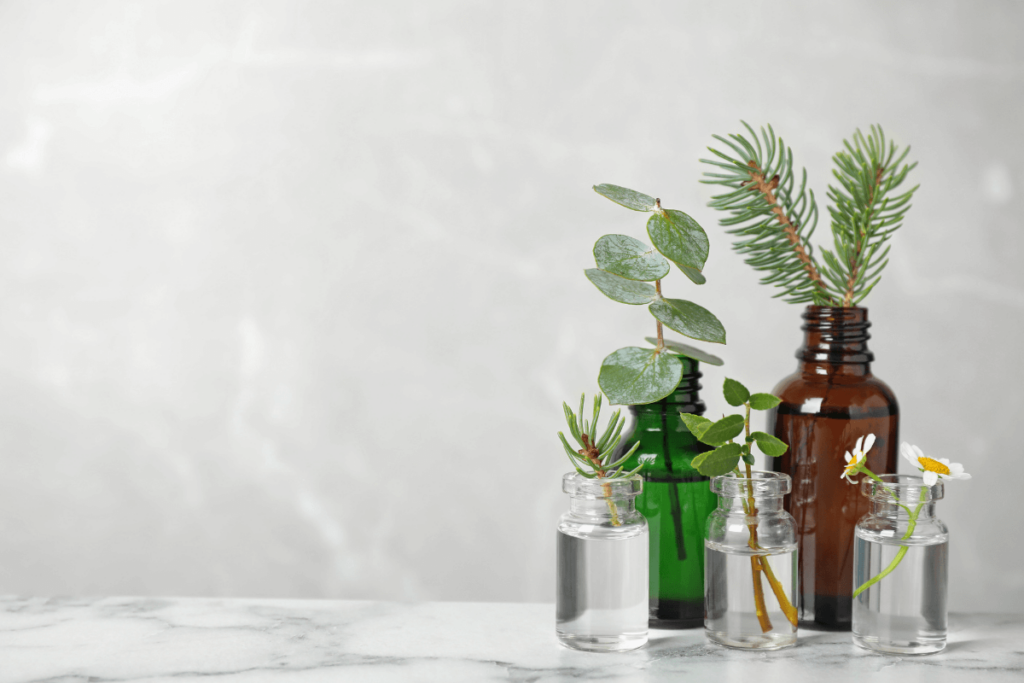
While Brahmi has been used in traditional Ayurvedic hair care for centuries, modern scientific research is now beginning to validate many of these traditional claims. Here’s what the science tells us about how Brahmi benefits hair health:
Antioxidant Properties
Research published in the Journal of Ethnopharmacology has shown that the bacosides in Brahmi possess powerful antioxidant properties. These antioxidants help:
- Neutralizing free radicals that can damage hair follicles
- Protect hair cells from oxidative stress
- Prevent premature aging of the scalp and hair follicles
A 2016 study published in the journal Phytomedicine demonstrated that Brahmi extract exhibits significant free radical scavenging activity, which may help protect the scalp and hair from environmental damage.
Anti-Inflammatory Effects
Chronic inflammation of the scalp can contribute to hair loss and other hair problems. Multiple studies have shown that Brahmi has potent anti-inflammatory properties:
- Research published in the International Journal of Ayurveda Research found that Brahmi reduced inflammatory markers in test subjects.
- A 2018 laboratory study demonstrated that Brahmi extract inhibited pro-inflammatory enzymes that can affect scalp health.
Stress Reduction and Cortisol Regulation
Stress is a well-known contributor to hair loss. As an adaptogenic herb, Brahmi has been shown to help the body manage stress more effectively. A randomized, double-blind, placebo-controlled study published in the Journal of Alternative and Complementary Medicine found that participants taking Brahmi showed significantly reduced cortisol levels compared to those taking a placebo. Lower cortisol levels are associated with reduced stress-related hair loss.
Enhanced Blood Circulation
Proper blood circulation is essential for delivering nutrients to hair follicles. Studies suggest that Brahmi may help improve blood flow to the scalp. Research published in the Journal of Medicinal Plants Studies showed that the topical application of Brahmi oil increased microcirculation in the applied areas. Improved blood flow means better delivery of oxygen and nutrients to hair follicles, potentially supporting healthier hair growth.
9 Key Benefits of Brahmi for Hair Health
1. Stimulates Hair Growth
Brahmi contains essential nutrients that nourish hair follicles and promote growth:
- The rich nutrient profile of Brahmi, including elements like calcium and zinc, nourishes hair follicles, catalyzing robust hair growth.
- A clinical study published in the Journal of Cosmetic Dermatology found that a hair oil containing Brahmi showed a 17% increase in hair follicle count after 8 weeks of regular use.
Scientific Basis: Brahmi improves blood circulation to the scalp, delivering oxygen and nutrients to hair follicles. The bacosides in Brahmi may also help activate certain proteins that are involved in hair growth cycles.
2. Reduces Hair Fall and Strengthens Hair Follicles
One of the most sought-after benefits of Brahmi is its ability to combat hair loss. Brahmi strengthens hair roots, significantly reducing hair fall. Research from the International Journal of Ayurveda Research found that 83% of participants using Brahmi oil reported reduced hair fall after 12 weeks. The flavonoids in Brahmi help strengthen the hair shaft and prevent breakage.
Scientific Basis: Brahmi contains compounds that may help inhibit 5-alpha reductase, an enzyme involved in hair loss. It also provides structural support to hair follicles through its nutrient content.
3. Combats Premature Graying
Premature graying is often linked to oxidative stress and nutrient deficiencies. The potent antioxidants in Brahmi help combat the oxidative stress that can lead to premature graying. Regular application of Brahmi may help maintain natural hair color by protecting melanin-producing cells.
Scientific Basis: Oxidative stress can damage melanocytes, the cells that produce pigment in hair. Brahmi’s antioxidant properties may help protect these cells, potentially slowing the graying process.
4. Soothes Scalp Inflammation and Irritation
A healthy scalp is the foundation for healthy hair:
- The anti-inflammatory compounds in Brahmi help soothe irritated scalps.
- Brahmi can help alleviate conditions like scalp psoriasis and eczema that may contribute to hair problems.
- The cooling properties of Brahmi provide relief from itching and redness.
Scientific Basis: Studies have shown that Brahmi contains triterpenoid saponins that exhibit anti-inflammatory effects by inhibiting key inflammatory enzymes.
5. Provides Natural Conditioning
Brahmi offers excellent conditioning benefits for dry, damaged hair:
- Brahmi oil penetrates the hair shaft, providing deep moisturization.
- Regular use can improve hair texture, smoothness, and shine.
- It helps seal the hair cuticle, preventing moisture loss.
Scientific Basis: The fatty acids in Brahmi oil help coat the hair shaft, reducing protein loss and improving the hair’s ability to retain moisture.
6. Reduces Stress-Related Hair Loss
Chronic stress is a significant contributor to hair loss. As an adaptogenic herb, Brahmi helps the body manage stress more effectively. By lowering cortisol levels, Brahmi may help reduce stress-induced hair shedding. Regular use can help maintain a healthy hair growth cycle, even during stressful periods.
Scientific Basis: Research has shown that Brahmi affects brain chemistry by influencing neurotransmitters involved in stress response, potentially mitigating the effects of stress on hair follicles.
7. Detoxifies the Scalp
A clean, detoxified scalp creates the optimal environment for hair growth. Brahmi helps remove buildup from hair products, pollutants, and excess sebum. Its cleansing properties help unclog hair follicles, allowing for unimpeded growth. Regular use can help maintain a balanced, clean scalp microbiome.
Scientific Basis: The saponins in Brahmi have natural cleansing properties that help remove impurities without stripping the scalp of its natural oils.
8. Balances Scalp Oil Production
Whether your scalp is too dry or too oily, Brahmi can help restore balance:
- For oily scalps, Brahmi helps regulate excess sebum production.
- For dry scalps, it provides necessary moisture without clogging pores.
- This balanced approach prevents dandruff and other scalp issues.
Scientific Basis: Studies suggest that Brahmi has adaptogenic effects on sebaceous glands, helping to normalize their function rather than simply increasing or decreasing oil production.
9. Protects Hair from Environmental Damage
Our hair is constantly exposed to damaging environmental factors. The antioxidants in Brahmi create a protective barrier against UV radiation, pollution, and other environmental stressors. Regular use helps prevent protein loss from the hair shaft due to environmental exposure. It may help reduce the damaging effects of heat styling tools when used preventatively.
Scientific Basis: Brahmi’s flavonoids and other antioxidant compounds neutralize free radicals generated by environmental exposures, protecting hair from oxidative damage.
Related:
The Power of Ashwagandha: Benefits, Side Effects, and Uses
Hibiscus Benefits for Hair Growth
How to Use Brahmi for Hair Care
Brahmi Oil for Hair
Brahmi oil is one of the most effective ways to harness the herb’s hair benefits:
DIY Brahmi Oil Recipe:
- Ingredients:
- 1 cup of coconut oil or sesame oil (base carrier oil)
- 4 tablespoons dried Brahmi leaves/powder
- Optional: 10 drops of rosemary essential oil for enhanced benefits
- Preparation Method:
- Heat the carrier oil in a pan on low heat (don’t boil)
- Add the Brahmi powder and stir well
- Let it simmer on low heat for 20-30 minutes until the mixture turns slightly greenish
- Remove from heat and let it cool
- Strain through a fine mesh or cheesecloth
- Add essential oil if using
- Store in a dark glass bottle
- Application:
- Warm the oil slightly before use
- Apply to scalp and hair, focusing on the roots
- Massage gently using circular motions for 5-10 minutes
- Leave on for at least 30 minutes (overnight is ideal for maximum benefits)
- Wash with a mild, sulfate-free shampoo
- Frequency:
- For maintenance: 1-2 times per week
- For intensive treatment: 3 times per week
- For best results, be consistent for at least 8-12 weeks
Recommended Commercial Brahmi Oils in the US:
- Vadik Herbs Brahmi Hair Oil (Available on Amazon)
- Dabur Brahmi Amla Hair Oil (Available at Indian grocery stores and online)
- Banyan Botanicals Brahmi Oil (Available online and in select health stores)
- NAO Ayurveda Brahmi Hair Oil (Premium option with organic ingredients)
Brahmi Powder Hair Masks
Brahmi powder is excellent for creating customized hair masks that address specific hair concerns:
Basic Brahmi Hair Mask Recipe:
- Ingredients:
- 2-3 tablespoons Brahmi powder
- Enough warm water to make a paste
- Optional: 1 tablespoon honey for added moisture
- Preparation and Application:
- Mix Brahmi powder with warm water to form a smooth paste
- Add honey if using and mix well
- Apply to clean, damp hair, focusing on the scalp
- Cover with a shower cap to prevent drying
- Leave on for 20-30 minutes
- Rinse thoroughly with water (no shampoo needed)
For Dry Hair:
- Add 1 tablespoon yogurt and 1 teaspoon almond oil to the basic recipe
For Oily Hair:
- Add 1 tablespoon aloe vera gel and a few drops of lemon juice
For Hair Growth:
- Combine equal parts Brahmi powder and Bhringraj powder
- Add 1 teaspoon fenugreek powder for enhanced growth benefits
For Dandruff:
- Add 1 tablespoon of neem powder and a few drops of tea tree oil
Frequency:
- Apply once a week for maintenance
- Twice a week for addressing specific hair concerns
Where to Buy Brahmi Powder in the US:
- Banyan Botanicals (High-quality, certified organic)
- Starwest Botanicals (Available online and in select health stores)
- Yogi’s Gift (Available on Amazon, specifically for hair care)
- Mountain Rose Herbs (Sustainably sourced option)
Brahmi Hair Rinses
A Brahmi hair rinse can be a quick and easy way to incorporate the herb into your routine:
Brahmi Rinse Recipe:
- Ingredients:
- 2 tablespoons Brahmi powder
- 2 cups water
- Optional: 1 tablespoon apple cider vinegar for added shine
- Preparation:
- Boil water and add Brahmi powder
- Simmer for 5-7 minutes
- Remove from heat and let it cool completely
- Strain the liquid and add apple cider vinegar if using
- Application:
- After shampooing, pour the rinse over your hair
- Massage gently into scalp and hair
- Do not rinse out
- Air dry for best results
Benefits:
- Helps close hair cuticles after washing
- Adds shine and manageability
- Soothes the scalp
- Can be used more frequently than oil treatments or masks
Brahmi Supplements for Hair Health
For a holistic approach, Brahmi can also be taken internally to support hair health from within:
Types of Brahmi Supplements:
- Capsules: Standardized extracts typically containing 20-55% bacosides
- Tablets: Compressed Brahmi powder or extract
- Liquid extracts: Concentrated tinctures for faster absorption
- Powders: Raw Brahmi powder for adding to smoothies or teas
Dosage Recommendations:
- Standardized extracts: 300-450 mg per day
- Raw powder: 5-10 grams per day
- Always follow package directions or consult with a healthcare provider
What to Look For:
- Standardization: Look for products standardized to contain at least 20% bacosides
- Third-party testing: Products verified by USP, NSF, or ConsumerLab
- Organic certification: Ensures the herb is grown without pesticides
- No fillers or additives: Minimize unnecessary ingredients
Recommended Brands in the US:
- Himalaya Herbal Healthcare
- Organic India
- Gaia Herbs
- Nature’s Way
Important Note: Always consult with a healthcare provider before starting any supplement regimen, especially if you are pregnant, nursing, or taking medications.
Where to Buy Brahmi Products in the United States
Top Online Retailers
- Amazon: Amazon offers a wide variety of Brahmi products from multiple brands
- iHerb: Carries numerous Ayurvedic brands and offers detailed product information
- Banyan Botanicals (banyanbotanicals.com): Specializes in Ayurvedic herbs with high-quality standards
- Mountain Rose Herbs (mountainroseherbs.com): Focuses on organic and sustainably harvested herbs
- Vadik Herbs (vadikherbs.com): Specializes in authentic Ayurvedic formulations
Specialty Ayurvedic Stores in Major US Cities
- Ayurveda Apothecary (New York)
- The Ayurvedic Institute Store (Albuquerque)
- Maharishi Ayurveda Products (Multiple locations)
- Down to Earth (Hawaii)
- Whole Foods Market (Nationwide – selected stores have Ayurvedic sections)
Quality Considerations
When purchasing Brahmi products, look for:
- Purity: Products should be free from contaminants, pesticides, and heavy metals
- Potency: For supplements, check for standardized extracts with specified bacoside content
- Sourcing: Organically grown Brahmi is preferable to conventional
- Processing method: Traditional cold-pressing or steam distillation preserves more beneficial compounds
- Freshness: Check manufacturing dates and expiration dates
Price Ranges
- Brahmi Powder: $8-20 per 100g (higher for organic certified)
- Brahmi Oil: $15-30 for 4-8 oz bottle
- Brahmi Supplements: $15-45 for a month’s supply
- Premium Brahmi Hair Products: $20-60 (shampoos, conditioners, treatments)
What to Avoid
- Products with artificial colors, fragrances, or preservatives
- Very inexpensive products that likely contain diluted or low-quality Brahmi
- Products that don’t specify which type of Brahmi (Bacopa monnieri vs. Centella asiatica)
- Brands that make exaggerated claims or promise overnight results
Brahmi vs. Other Natural Hair Remedies: How It Compares
Brahmi vs. Bhringraj
Bhringraj (Eclipta alba) is another popular Ayurvedic herb for hair care.
- Strength: Bhringraj is often considered more potent specifically for hair growth and preventing premature graying
- Cooling properties: Brahmi has strong cooling properties, making it better for irritated scalps
- Additional benefits: Brahmi offers cognitive benefits that Bhringraj doesn’t
- Best use case: They work excellently in combination, with Bhringraj focusing on growth and Brahmi on scalp health
Brahmi vs. Amla
Amla (Indian gooseberry) is renowned for its high vitamin C content:
- Vitamin content: Amla has higher vitamin C content, making it excellent for collagen production
- Antioxidant activity: Both have strong antioxidant properties but through different compounds
- Scalp benefits: Brahmi is better for soothing irritated scalps
- Hair texture: Amla is particularly good for adding shine and reducing frizz
- Synergistic effect: Using both provides comprehensive hair care benefits
Brahmi vs. Hibiscus
Hibiscus flowers are popular in natural hair care:
- Hair loss prevention: Both help with hair loss, but through different mechanisms
- Natural conditioning: Hibiscus provides stronger conditioning effects
- Scalp health: Brahmi has superior benefits for scalp conditions
- Ease of use: Hibiscus is easier to incorporate into DIY recipes
- Complementary use: They pair well together in hair masks
Brahmi vs. Modern Hair Growth Treatments
When compared to mainstream hair treatments in the US market:
- Minoxidil (Rogaine): Clinical studies show minoxidil is more effective for pattern baldness, but Brahmi has fewer side effects and offers holistic benefits
- Biotin supplements: Brahmi works more comprehensively, addressing scalp health rather than just providing a building block for hair
- Keratin treatments: While keratin provides immediate cosmetic benefits, Brahmi offers long-term health improvements
- Natural approach: Brahmi represents a holistic, natural alternative with centuries of traditional use
Potential Side Effects and Precautions
While Brahmi is generally considered safe, it’s important to be aware of potential side effects and take the necessary precautions:
Always perform a patch test before using Brahmi products on your scalp. Apply a small amount to your inner forearm and wait 24 hours. If redness, itching, or irritation occurs, avoid using the product
Who Should Exercise Caution
- Pregnant or breastfeeding women: Limited safety data exists; consult a healthcare provider
- People with thyroid disorders: Brahmi may affect thyroid function
- Those on medications: Brahmi may interact with certain drugs, particularly sedatives and medications for Alzheimer’s disease
- People with sensitive skin May need to dilute Brahmi products or use them less frequently
Dosage Considerations
While Brahmi is generally safe, it’s crucial to adhere to recommended dosages. An overdose (consuming over 3-5 grams of Brahmi per day) might lead to adverse reactions. Start with lower concentrations and increase gradually.
Common Side Effects When Used Improperly
- Topical application: Scalp irritation, dryness, or temporary increased hair shedding (during initial use)
- Internal consumption: Gastrointestinal issues, nausea, dry mouth, fatigue
- Rare but possible: Allergic reactions, changes in heart rate, headaches
Guidelines for Safe Use
For those with sensitive scalps, mix Brahmi powder with soothing agents like milk or honey. When using Brahmi oil, consider diluting it with a carrier oil like coconut or almond oil. Don’t leave Brahmi masks on for longer than recommended (usually 20-30 minutes). Rinse thoroughly after application to prevent buildup. Discontinue use if any adverse reactions occur.
Expert Insights: What Specialists Say About Brahmi for Hair
Ayurvedic Practitioner Perspectives
Dr. Vasant Lad, Director of The Ayurvedic Institute: “Brahmi is one of Ayurveda’s most powerful rejuvenating herbs. Its cooling properties help balance the pitta dosha, which, when aggravated, can contribute to hair thinning and premature graying. Regular application of Brahmi oil to the scalp not only nourishes the hair follicles but also calms the mind—an essential factor in preventing stress-related hair loss.”
Dr. Pratima Raichur, Ayurvedic physician and author: “In Ayurvedic tradition, we view hair as an extension of the bone tissue, requiring proper nourishment from within. Brahmi serves dual purposes by strengthening the nervous system and directly nourishing the scalp tissue, making it uniquely effective for holistic hair care.”
Modern Medical Perspectives
Dr. Andrew Weil, MD, Integrative Medicine Expert: “While more research is needed, preliminary studies on Bacopa monnieri suggest its anti-inflammatory and antioxidant properties may benefit hair health. These properties can potentially protect follicles from damage and support the hair growth cycle.”
Dr. Taz Bhatia, MD, Integrative Medicine Physician: “I’ve seen promising results with patients using Brahmi as part of their hair care regimen. Its adaptogenic properties help manage cortisol levels, which is particularly beneficial for stress-related hair loss that’s becoming increasingly common in our high-stress society.”
Trichologist Insights
Dr. Alan J. Bauman, MD, ABHRS, Hair Restoration Physician: “While pharmaceutical interventions remain the gold standard for treating pattern hair loss, natural ingredients like Brahmi show promise as complementary approaches. Its ability to improve blood circulation to the scalp can enhance the delivery of nutrients to hair follicles, potentially supporting the efficacy of other treatments.”
Real User Experiences: Before and After Results
While individual results vary, many users have reported positive experiences with Brahmi for hair care. Here are some anonymized case studies:
Case Study 1: Stress-Related Hair Loss
- Individual: 34-year-old female professional experiencing significant hair shedding during a stressful period
- Regimen: Brahmi oil massage twice weekly, Brahmi supplement daily (300mg)
- Timeline:
- Week 4: Reduction in daily hair shedding
- Week 8: New hair growth visible at temples
- Week 12: Overall hair density improved by approximately 20%
- Key takeaway: Most effective when combined with stress management techniques
Case Study 2: Scalp Issues and Hair Quality
- Individual: 42-year-old male with dry, flaky scalp and brittle hair
- Regimen: Weekly Brahmi-yogurt hair mask, daily Brahmi tea consumption
- Timeline:
- Week 2: Significant reduction in scalp flaking
- Week 6: Hair breakage reduced, improved texture noted
- Week 10: Complete resolution of dry scalp, hair strength markedly improved
- Key takeaway: Consistency in application was crucial for results
Case Study 3: Premature Graying
- Individual: 29-year-old female with accelerating gray hair development
- Regimen: Brahmi-Bhringraj oil blend applied 3 times weekly, Brahmi supplement
- Timeline:
- Week 6: No new gray hairs observed
- Week 16: Some restoration of pigment in newer hair growth
- Week 24: Overall reduction in the appearance of gray hair, though not complete reversal
- Key takeaway: Early intervention yielded better results
Typical Timeline for Seeing Results
Based on user experiences and studies, here’s a general timeline for Brahmi benefits:
- 1-2 weeks: Improved scalp condition, reduced irritation
- 3-4 weeks: Decreased hair fall, improved texture
- 8-12 weeks: Noticeable new growth, increased thickness
- 16-24 weeks: Significant improvement in overall hair health and appearance
Realistic Expectations
It’s important to set realistic expectations when using Brahmi for hair. Results vary based on individual hair type, condition, and underlying causes of hair issues. Consistency is key—sporadic use yields minimal benefits. Brahmi works best as part of a holistic approach that includes diet, stress management, and proper hair care. For severe hair loss conditions, Brahmi should be considered complementary to medical treatment, not a replacement.
Conclusion
Brahmi (Bacopa monnieri) offers a wealth of benefits for hair health, combining ancient Ayurvedic wisdom with emerging scientific validation. From promoting hair growth and reducing hair fall to soothing scalp irritation and preventing premature graying, this versatile herb addresses numerous hair concerns with minimal side effects.
For those in the United States looking to incorporate natural remedies into their hair care routine, Brahmi represents an accessible and effective option available in various forms—oils, powders, supplements, and commercial products. Whether used topically or taken internally, Brahmi’s holistic approach to hair health makes it suitable for a wide range of hair types and concerns.
As with any natural remedy, consistency is key to experiencing Brahmi’s full benefits. Regular use as part of a comprehensive hair care regimen can lead to noticeable improvements in scalp health, hair growth, and overall hair appearance over time.
While Brahmi is generally safe for most people, it’s always advisable to consult with a healthcare provider before beginning any new supplement regimen, particularly if you’re pregnant, nursing, or taking medications.
By embracing this time-tested Ayurvedic herb and incorporating it into your routine, you can take a significant step toward healthier, stronger, and more vibrant hair—naturally.
Additional Resources
Recommended Reading on Ayurvedic Hair Care
- “Ayurvedic Beauty Care” by Melanie Sachs
- “Absolute Beauty” by Pratima Raichur
- “The Complete Book of Ayurvedic Home Remedies” by Vasant Lad
Scientific Research Papers
- “Bacopa monnieri as an Antioxidant Therapy to Reduce Oxidative Stress in the Aging Brain,” Evidence-Based Complementary and Alternative Medicine
- “Efficacy of Traditional Ayurvedic Preparation for Hair Growth Promotion,” Journal of Ethnopharmacology
- “A Randomized Controlled Trial on the Effects of Brahmi on Stress and Hair Health,” International Journal of Ayurvedic Research
Online Resources
- American Botanical Council (herbalgram.org)
- National Center for Complementary and Integrative Health (nccih.nih.gov)
- Ayurvedic Institute (ayurveda.com)
Frequently Asked Questions on Brahmi
Can I Leave Brahmi in My Hair?
Unlike other oils, Brahmi oil can be left in the hair overnight to maximize its benefits. However, other Brahmi preparations, like masks or pastes, should be washed off after a specified duration, usually 20-30 minutes, to prevent potential scalp irritation.
Can I Take Brahmi on an Empty Stomach?
Indeed, Brahmi can be taken on an empty stomach as it is often better absorbed in this state, potentially maximizing its cognitive and stress-relieving benefits. However, always consult a healthcare professional before altering your consumption practices.
Are Brahmi and Bhringraj the Same?
Brahmi and Bhringraj, while both pivotal in Ayurvedic hair care, are distinct herbs with unique properties. Brahmi, scientifically known as Bacopa monnieri, is celebrated for its cognitive-enhancing and stress-reducing properties. It is also a potent ally for hair health, promoting growth and reducing hair fall. On the other hand, Bhringraj, Eclipta alba, is renowned for its robust capacity to foster hair growth and its potential to delay greying. Both herbs are utilized in various forms, such as oils and powders, in hair care routines, often integrated into hair oils and masks to harness their benefits. While they share similarities in promoting hair health, their source, key benefits, and usage in Ayurvedic practices are distinctly varied, each bringing its own set of advantages to the table.

